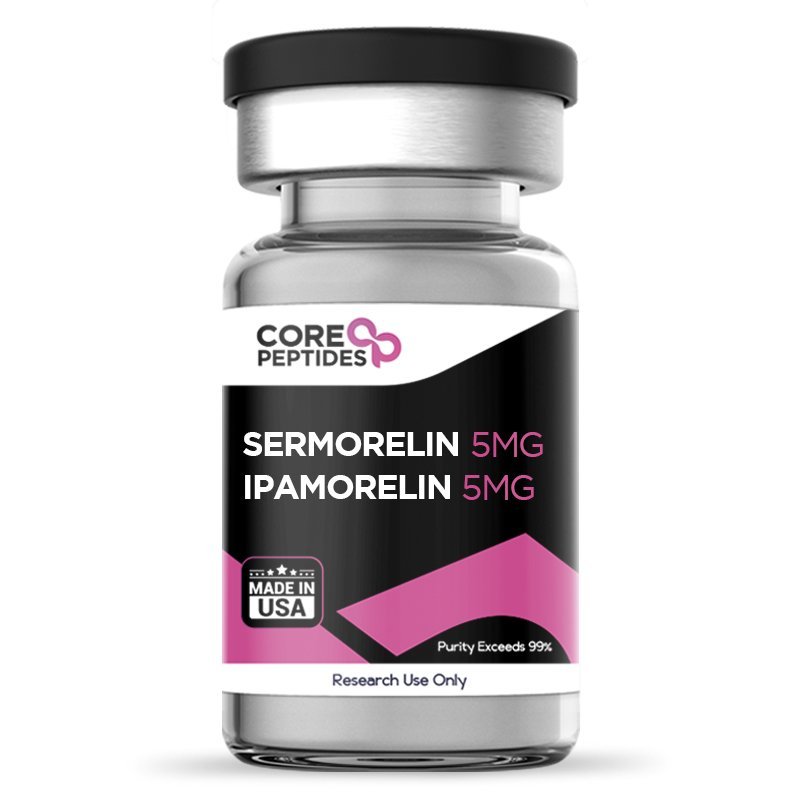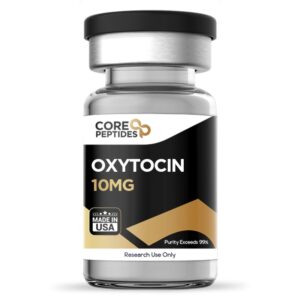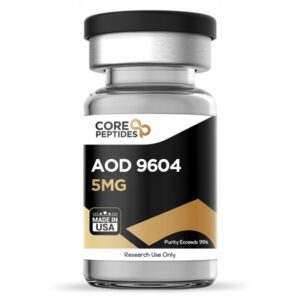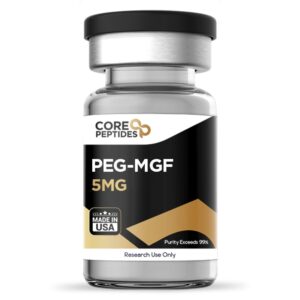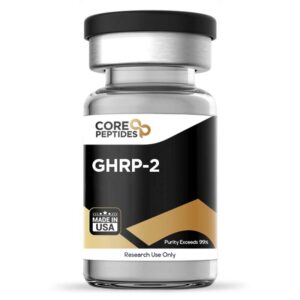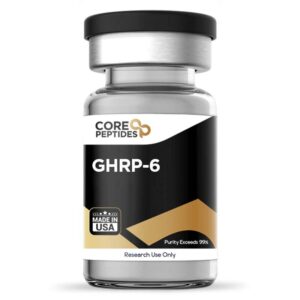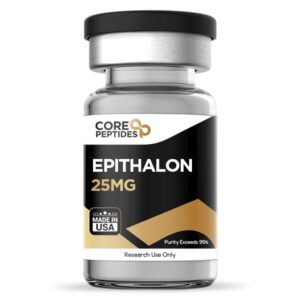Sermorelin & Ipamorelin Blend (10mg)
$80.00
Size: 10mg
Contents: Sermorelin 5mg, Ipamorelin 5mg
Form: Lyophilized powder
Purity: >99%
SKU: P-SERMIPAM-10
FREE Shipping on $200+ orders
Discount per Quantity
| Quantity | Discount | Price |
|---|---|---|
| 5 - 8 | 5% | $76.00 |
| 9 + | 10% | $72.00 |
Sermorelin & Ipamorelin Blend
Both Ipamorelin & Sermorelin are synthetic peptides, and when blended, they may act synergistically to further their individual potential impacts. More specifically, they both appear to upregulate the production of growth hormone. The growth hormone appears to play a vital role in accelerating growth and is considered to function primarily to regulate metabolic functions.
Overview
Sermorelin & Ipamorelin are synthetic peptides, where Sermorelin is composed of 29 amino acids(1) and Ipamorelin is composed of 5 amino acids.(2) Sermorelin seems to serve as a functional equivalent to the naturally occurring growth hormone-releasing hormone (GHRH). Unlike GHRH, which consists of 44 amino acids, Sermorelin is shortened to a sequence of 29 amino acids. This truncated form is also referred to as Growth Hormone Releasing Factor (1-29) or simply GRF (1-29).
Ipamorelin was the first synthetic GHS discovered with a proposed high selectivity towards the growth hormone receptors without apparently affecting the synthesis of other pituitary hormones such as ACTH and prolactin.(3)
Sermorelin is also known as GHRF (1-29) amide, and the potential of this fragment was first investigated in the early 1980s. It was suggested that upon introduction, Sermorelin may exhibit affinity towards the GHRH receptors located at the pituitary gland and possibly stimulate the secretion of growth hormone.(4)
Both Ipamorelin & Sermorelin are posited to produce action on the pituitary gland. Upon binding, these peptides are suggested to stimulate the pituitary gland and secrete more growth hormone.(4)(5)
The difference in their mode of action is the pathway by which they exert their action. Sermorelin appears to affect the GHRH receptors while Ipamorelin appears to act via the ghrelin pathway.(5) Thus, it is believed that Sermorelin may retain the core ability of GHRH: to potentially prompt the GHRH receptors in the pituitary gland to intermittently release growth hormone. This action is thought to subsequently elevate levels of insulin-like growth factor-1 (IGF-1), which is viewed as the primary agent responsible for the anabolic action of growth hormone. Ipamorelin does not appear to work via the GHRH receptors. Instead, this synthetic pentapeptide is under investigation for its potential capabilities as a growth hormone secretagogue (GHS). It is thought to function similarly to Growth Hormone Releasing Peptides (GHRPs) and may potentially mimic the natural action of the hunger hormone, ghrelin. The peptide is suspected to target ghrelin receptors in the anterior pituitary gland, also known as Growth Hormone Secretagogue Receptors 1 Alpha (GHS-R1a). This characteristic positions Ipamorelin as a highly selective secretagogue and a potent agonist for the growth hormone/ghrelin secretagogue receptor.
Since the mode of action of both the peptides appears to be different, they may complement each other when presented together and thereby provide a potentially greater growth hormone response.
A major difference between the two peptides appears to be their respective half-lives, where the half-life of Sermorelin is considered to be 11 to 12 minutes and that of Ipamorelin is approximately 2 hours.(6)
Therefore, research has posited that Sermorelin may trigger an immediate growth hormone response while Ipamorelin may extend this process for longer periods.
Chemical Makeup
Molecular Formula:
- Sermorelin: C149H246N44O42S
- Ipamorelin: C38H49N9O5
Molecular Weight:
- Sermorelin: 3357.93 g/mol
- Ipamorelin: 771.86 g/mol
Other Known Titles
- Sermorelin: GRF 1-29
- Ipamorelin: NNC 26-0161
Research and Clinical Studies
Currently, there is no research and clinical data available for the Ipamorelin & Sermorelin blend together, however both these peptides have been individually studied.
Sermorelin & Ipamorelin Blend and Growth Hormone
Sermorelin and ipamorelin are both peptides that have been investigated for their possible roles in elevating levels of growth hormone and its potential anabolic mediator, IGF-1. One study seems to suggest that Sermorelin may lead to an 82% increase in average growth hormone levels, which appeared to last for around two hours.(7) Another study, lasting 16 weeks, posited that Sermorelin might potentially result in up to a 107% rise in growth hormone levels and up to a 28% uptick in IGF-1 levels.(8 Conversely, Ipamorelin has been associated with what appears to be a substantial increase in growth hormone levels, reaching levels that may be as high as 80mIU/l (approximately a 26.6ng/ml concentration). When these figures are presented as a percentage increase compared to a placebo (1.31mIU/l (0.4ng/ml)), it seems to represent a noteworthy elevation in growth hormone levels, exceeding 6000%. Both peptides appear to have a strong potential for raising growth hormone and IGF-1 levels. However, it is worth noting that the extent of the increase and the duration for which these elevated levels are maintained could vary between the two.(9
Sermorelin & Ipamorelin Blend and Lean Mass
Both Sermorelin and Ipamorelin appear to exert influence on lean mass and body composition. According to research, Sermorelin has been suggested to increase lean body mass by a margin of 2.78 lbs (1.26 kg), without affecting fat mass. These observations are posited to be due to the potential of the peptide to increase growth hormone and subsequently IGF-1, a purported anabolic mediator of growth hormone.(8) The most notable results commented by the researchers included that “...a gain of 1.26 ± 0.52 kg (P < 0.05) in LBM was found.” and “Skin thickness increased significantly…” Ipamorelin has also been suggested to potentially lead to lean mass increase, related to an increase in appetite and total weight gain. That is related to the proposed impact that Ipamorelin may have on ghrelin receptors.
For instance, research suggests that subjects exposed to Ipamorelin exhibited a weight increase by roughly 17%.(10) The compound is thought to potentially elevate fat pad weights in proportion to total body mass. Consequently, measurements taken via dual energy X-ray absorptiometry (DEXA) might indicate a relative increase in body fat. Moreover, there are indications that Ipamorelin may have elevated serum leptin levels, a hormone involved in energy and appetite regulation. The researchers posited that “GHSs increase body fat by GH-independent mechanisms that may include increased feeding.” This has led experts to speculate that heightened food consumption may contribute to the observed weight gain in groups presented with Ipamorelin.
Sermorelin & Ipamorelin Blend and Bone Mineralization
Ipamorelin has been purported to potentially cause an increase in bone mineral density which may be related to its apparent role in increasing lean and total weight. During an investigation, Ipamorelin and a placebo were tested on mouse models to evaluate their action on bone density.(11) The study utilized real-time DEXA scans to track alterations in bone mineral content, with a focus on specific areas such as the femur and L6 vertebrae. Once the study concluded, pQCT scans were performed on the femurs to gather additional data. Preliminary results suggest a potential correlation between Ipamorelin and both weight gain and an increase in bone mineral content in the tibia and vertebrae, as evidenced by DEXA, relative to the placebo group. Furthermore, the pQCT findings hint that the noted increase in cortical BMC could be due to an expansion in the bone's cross-sectional area.
Sermorelin & Ipamorelin Blend is available for research and laboratory purposes only. Please review and adhere to our Terms and Conditions before ordering.
References:
- National Center for Biotechnology Information. “PubChem Compound Summary for CID 16129620, Sermorelin” PubChem, https://pubchem.ncbi.nlm.nih.gov/compound/Sermorelin
- National Center for Biotechnology Information. “PubChem Compound Summary for CID 9831659, Ipamorelin” PubChem, https://pubchem.ncbi.nlm.nih.gov/compound/Ipamorelin
- Raun K, Hansen BS, Johansen NL, Thøgersen H, Madsen K, Ankersen M, Andersen PH. Ipamorelin, the first selective growth hormone secretagogue. Eur J Endocrinol. 1998 Nov;139(5):552-61. https://pubmed.ncbi.nlm.nih.gov/9849822/
- Clark, R G, and I C Robinson. “Growth induced by pulsatile infusion of an amidated fragment of human growth hormone releasing factor in normal and GHRF-deficient rats.” Nature vol. 314,6008 (1985): 281-3. https://pubmed.ncbi.nlm.nih.gov/2858818/
- Sinha, D. K., Balasubramanian, A., Tatem, A. J., Rivera-Mirabal, J., Yu, J., Kovac, J., Pastuszak, A. W., & Lipshultz, L. I. (2020). Beyond the androgen receptor: the role of growth hormone secretagogues in the modern management of body composition in hypogonadal males. Translational andrology and urology, 9(Suppl 2), S149–S159. https://doi.org/10.21037/tau.2019.11.30
- Junichi I. et al, Growth hormone secretagogues: history, mechanism of action, and clinical development, JSCM Rapid Communications Vol. 3 Issue 1, 09 February 2020. https://onlinelibrary.wiley.com/doi/full/10.1002/rco2.9
- Vittone, J., Blackman, M. R., Busby-Whitehead, J., Tsiao, C., Stewart, K. J., Tobin, J., Stevens, T., Bellantoni, M. F., Rogers, M. A., Baumann, G., Roth, J., Harman, S. M., & Spencer, R. G. (1997). Effects of single nightly injections of growth hormone-releasing hormone (GHRH 1-29) in healthy elderly men. Metabolism: clinical and experimental, 46(1), 89–96. https://doi.org/10.1016/s0026-0495(97)90174-8
- Khorram, O., Laughlin, G. A., & Yen, S. S. (1997). Endocrine and metabolic effects of long-term administration of [Nle27]growth hormone-releasing hormone-(1-29)-NH2 in age-advanced men and women. The Journal of clinical endocrinology and metabolism, 82(5), 1472–1479. https://doi.org/10.1210/jcem.82.5.3943
- Gobburu, J. V., Agersø, H., Jusko, W. J., & Ynddal, L. (1999). Pharmacokinetic-pharmacodynamic modeling of ipamorelin, a growth hormone releasing peptide, in human volunteers. Pharmaceutical research, 16(9), 1412–1416. https://doi.org/10.1023/a:1018955126402
- Lall, S., Tung, L. Y., Ohlsson, C., Jansson, J. O., & Dickson, S. L. (2001). Growth hormone (GH)-independent stimulation of adiposity by GH secretagogues. Biochemical and biophysical research communications, 280(1), 132–138. https://doi.org/10.1006/bbrc.2000.4065
- Svensson, J., Lall, S., Dickson, S. L., Bengtsson, B. A., Rømer, J., Ahnfelt-Rønne, I., Ohlsson, C., & Jansson, J. O. (2000). The GH secretagogues ipamorelin and GH-releasing peptide-6 increase bone mineral content in adult female rats. The Journal of endocrinology, 165(3), 569–577. https://doi.org/10.1677/joe.0.1650569
